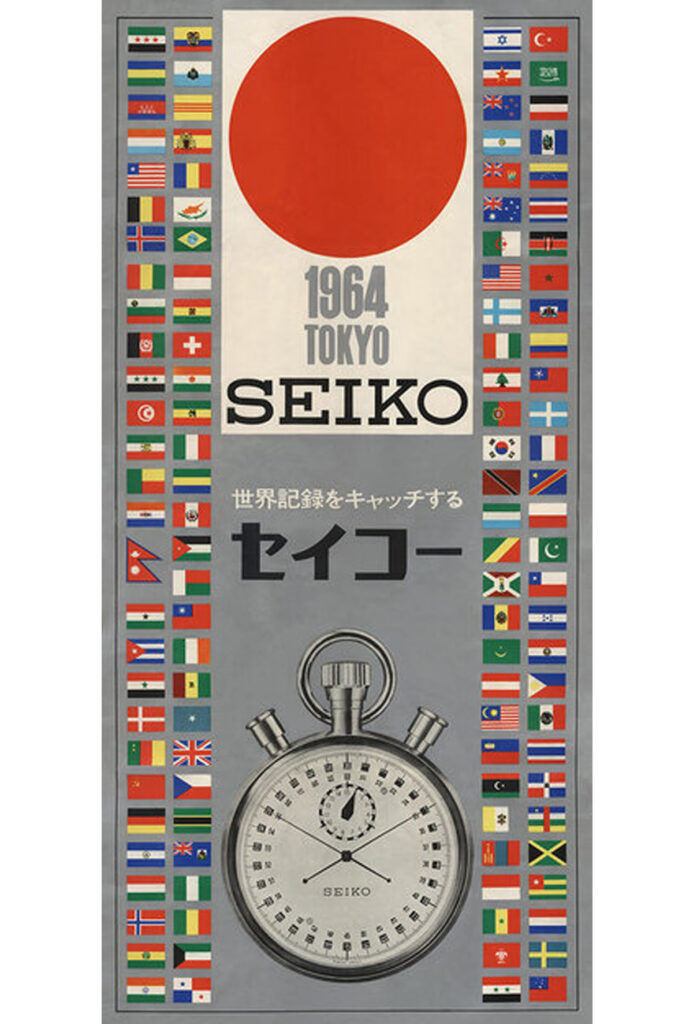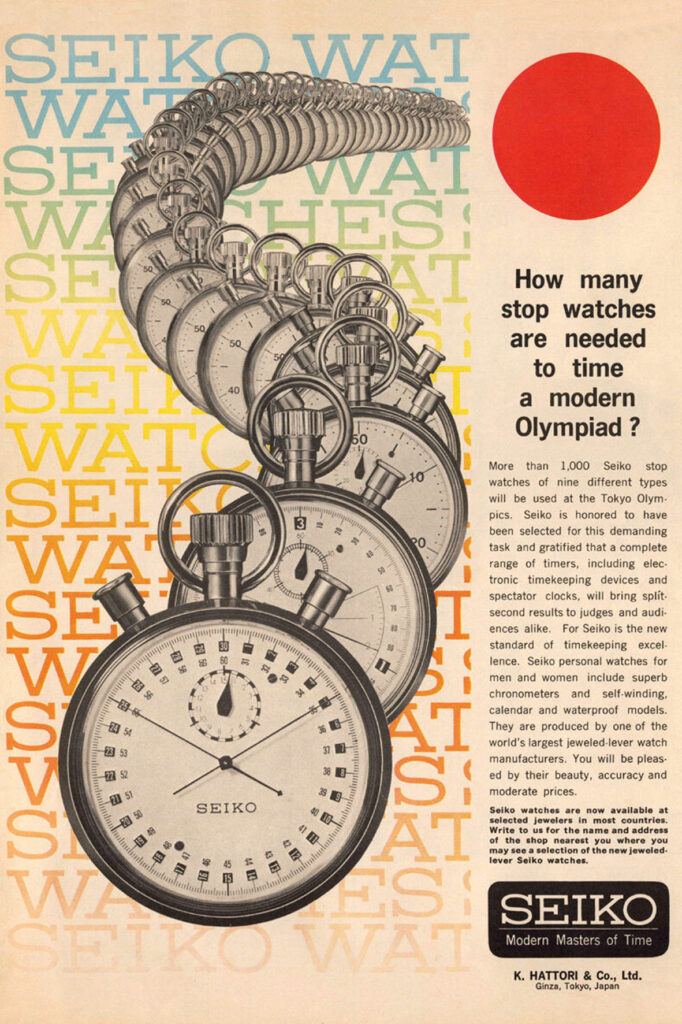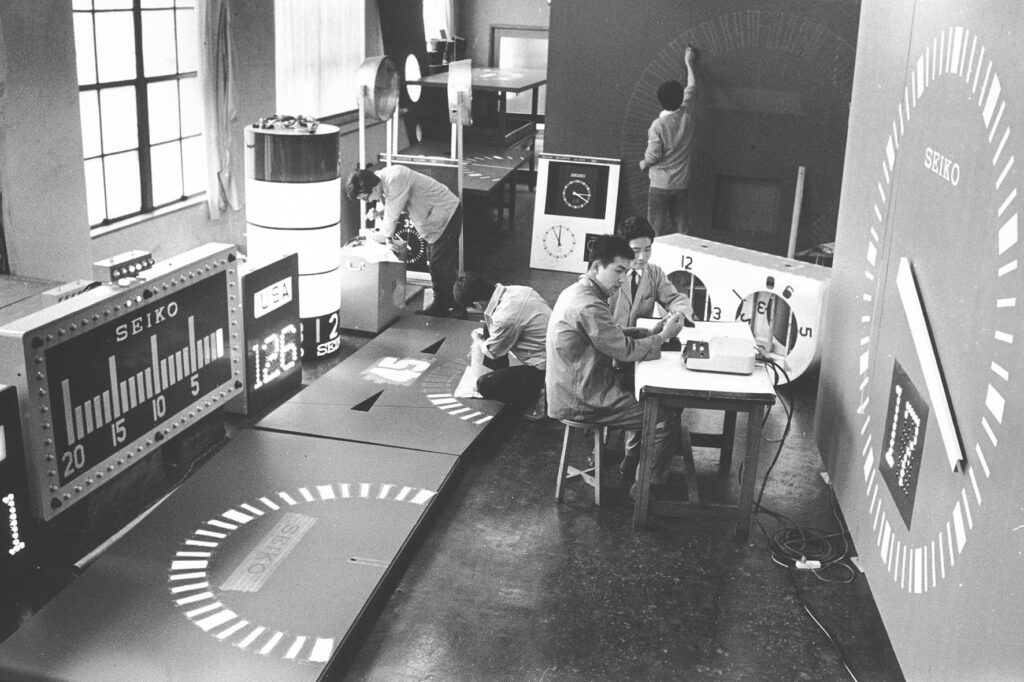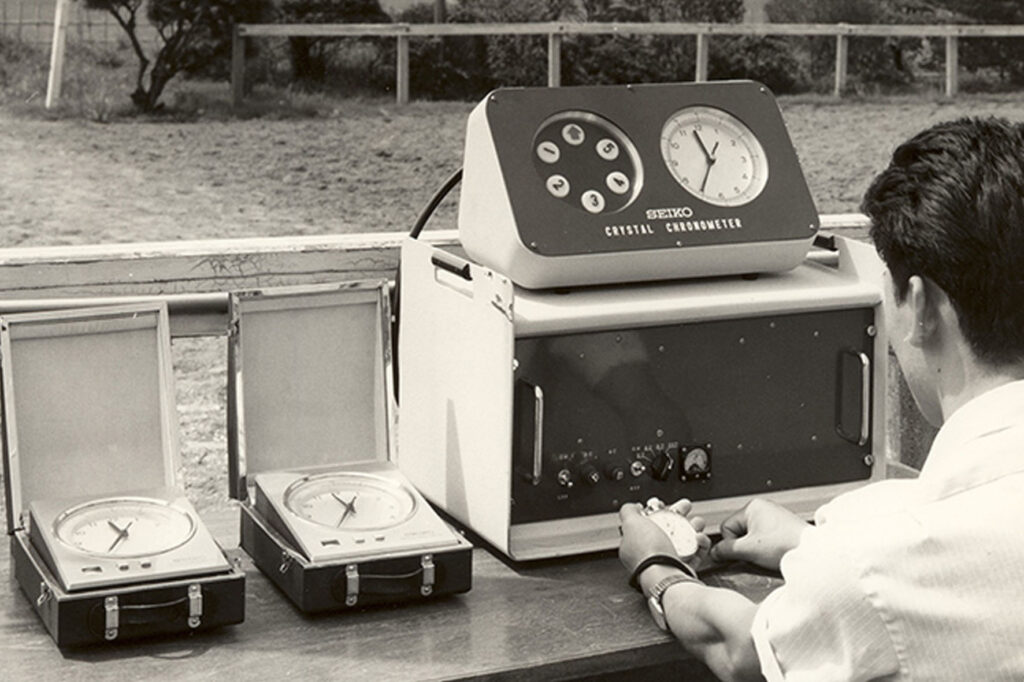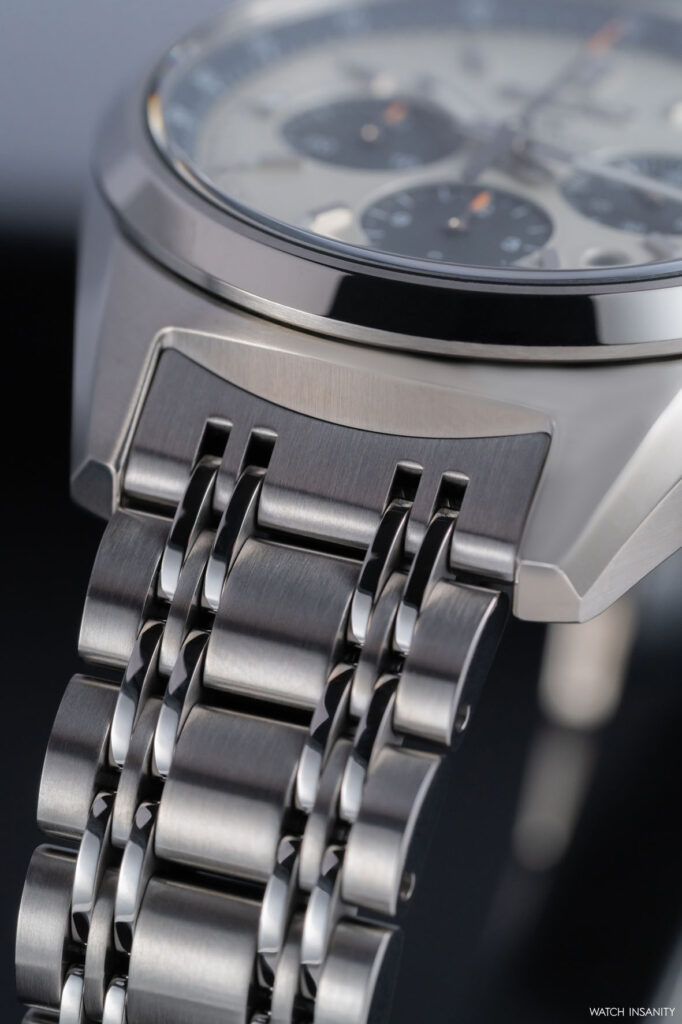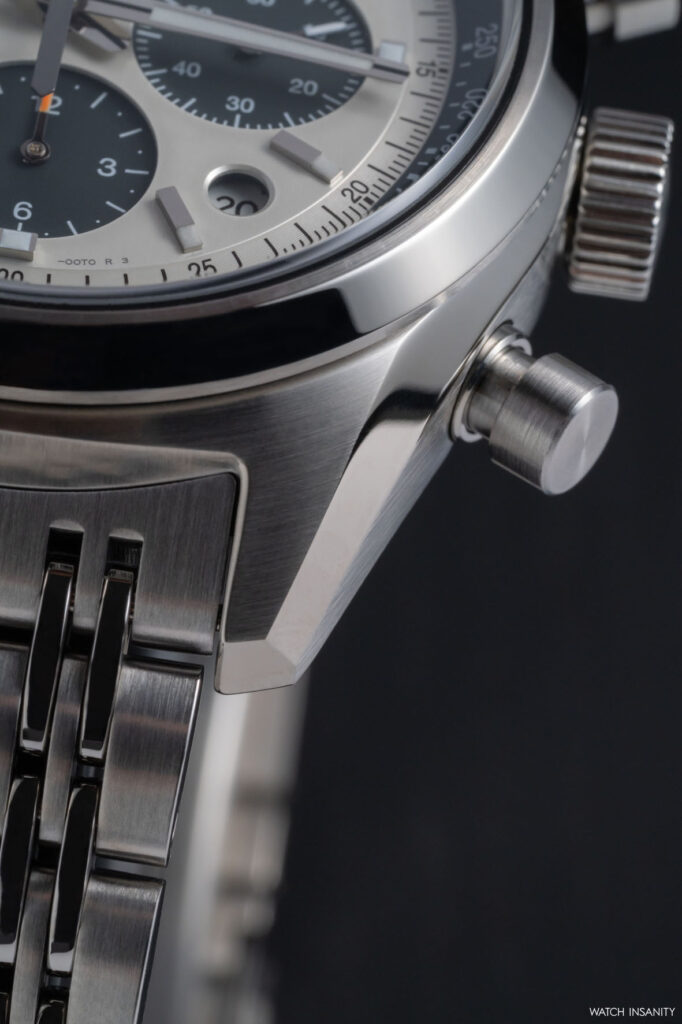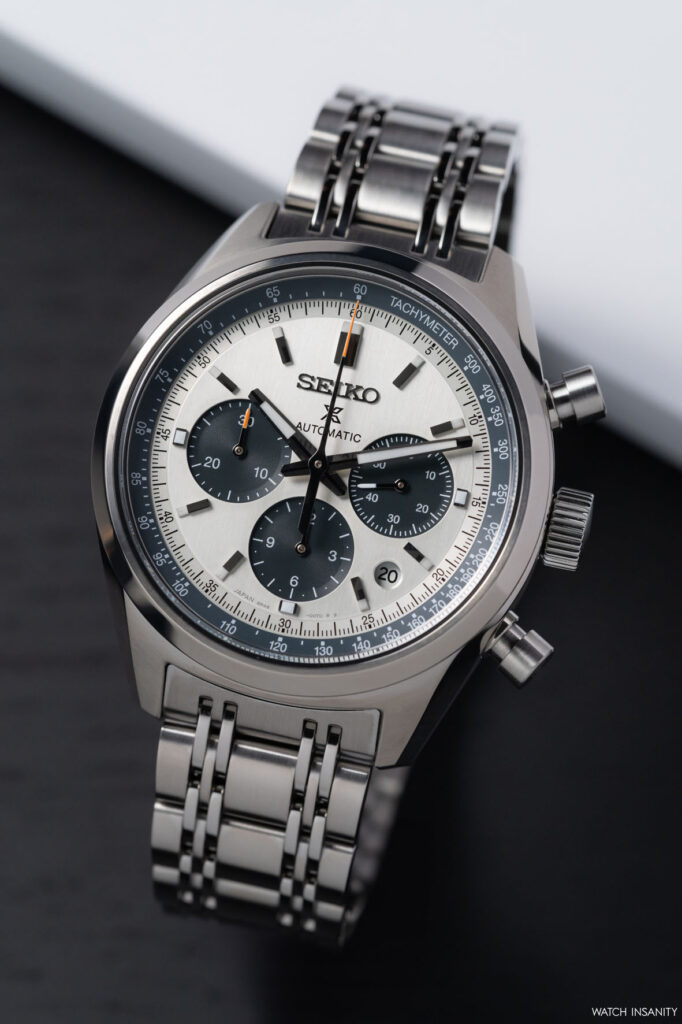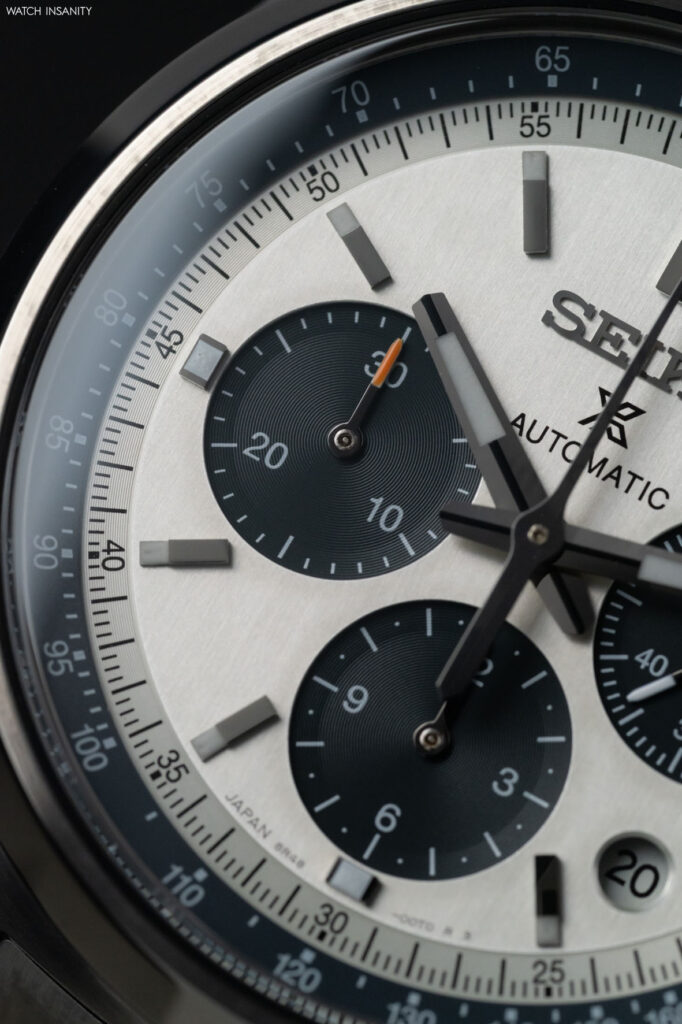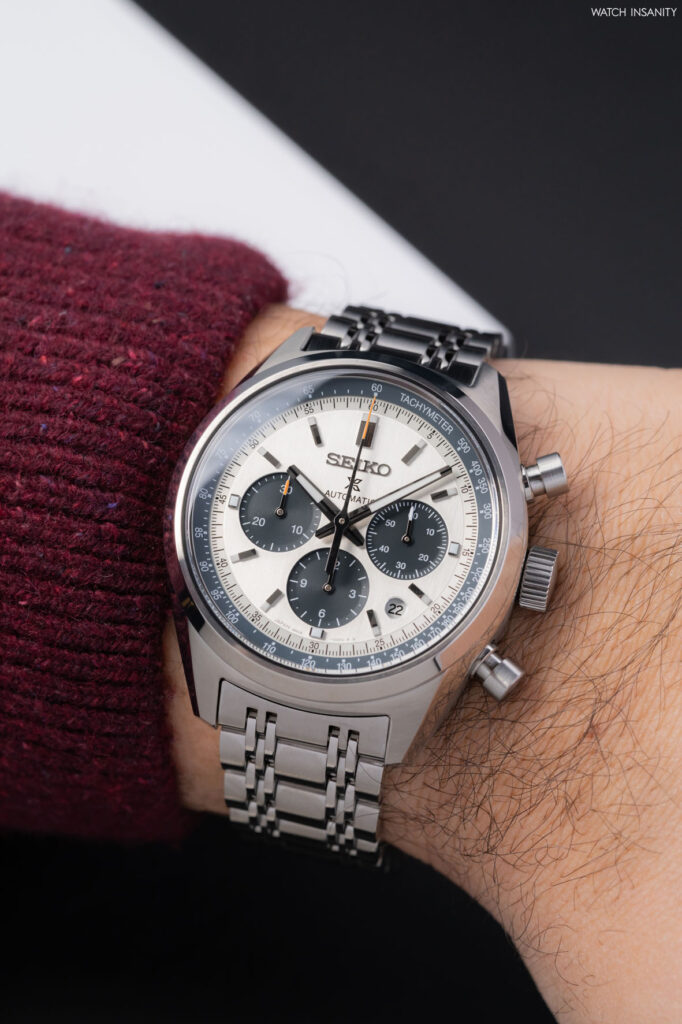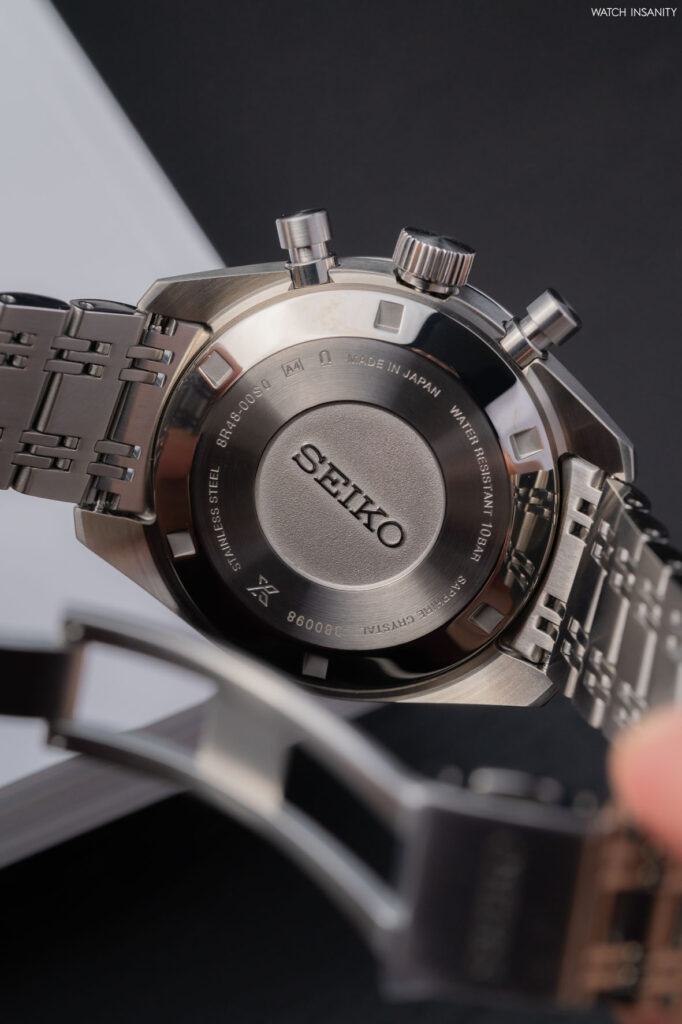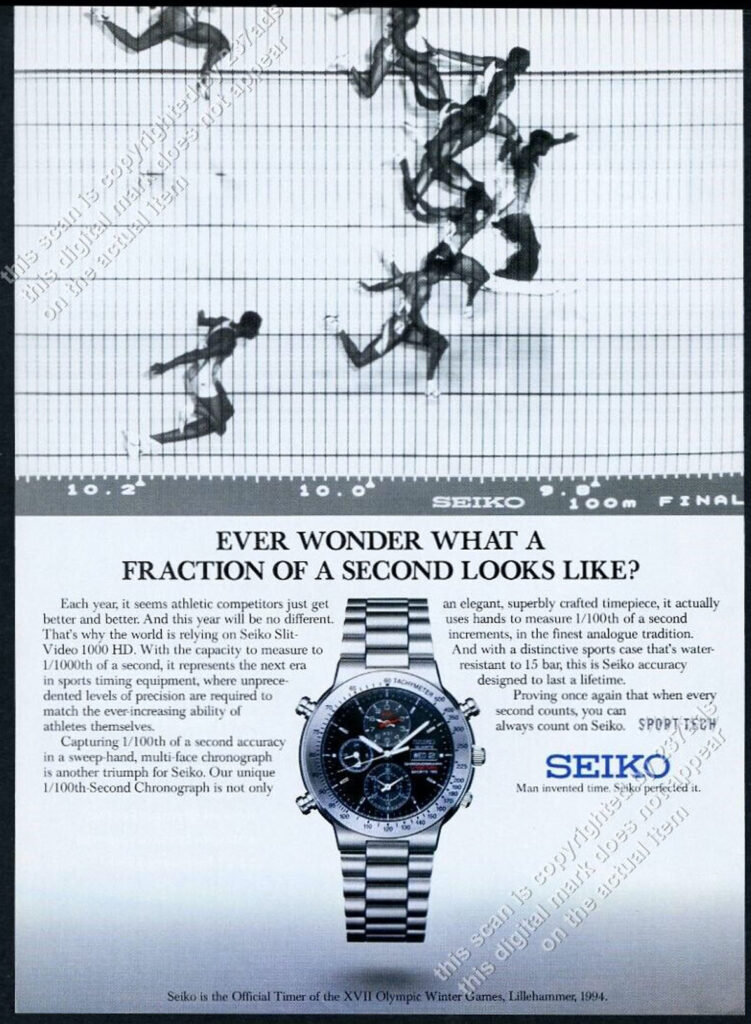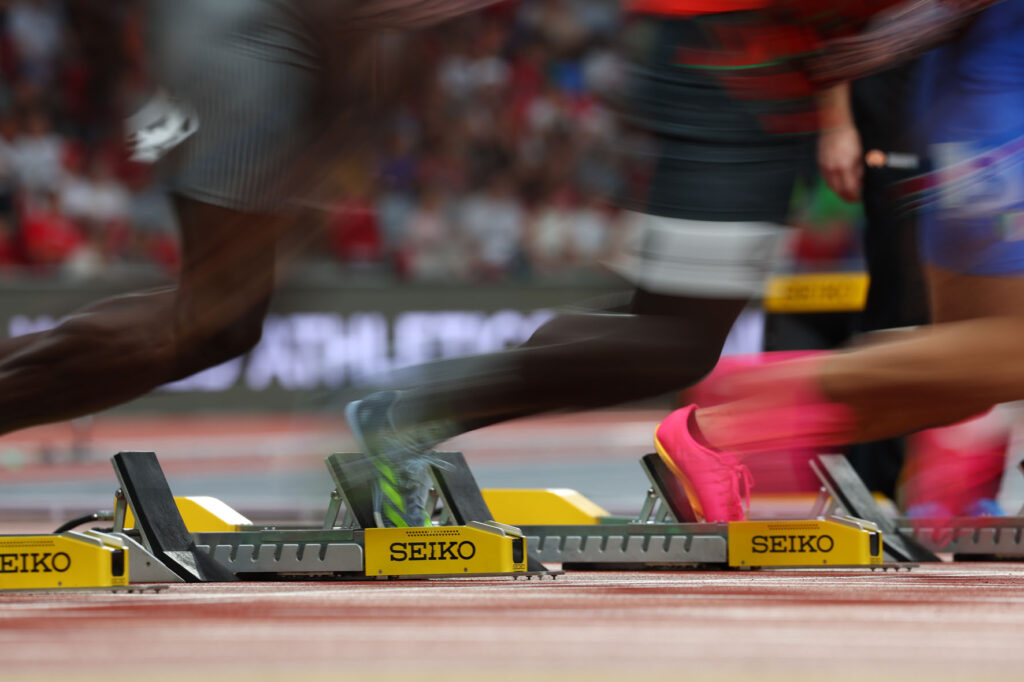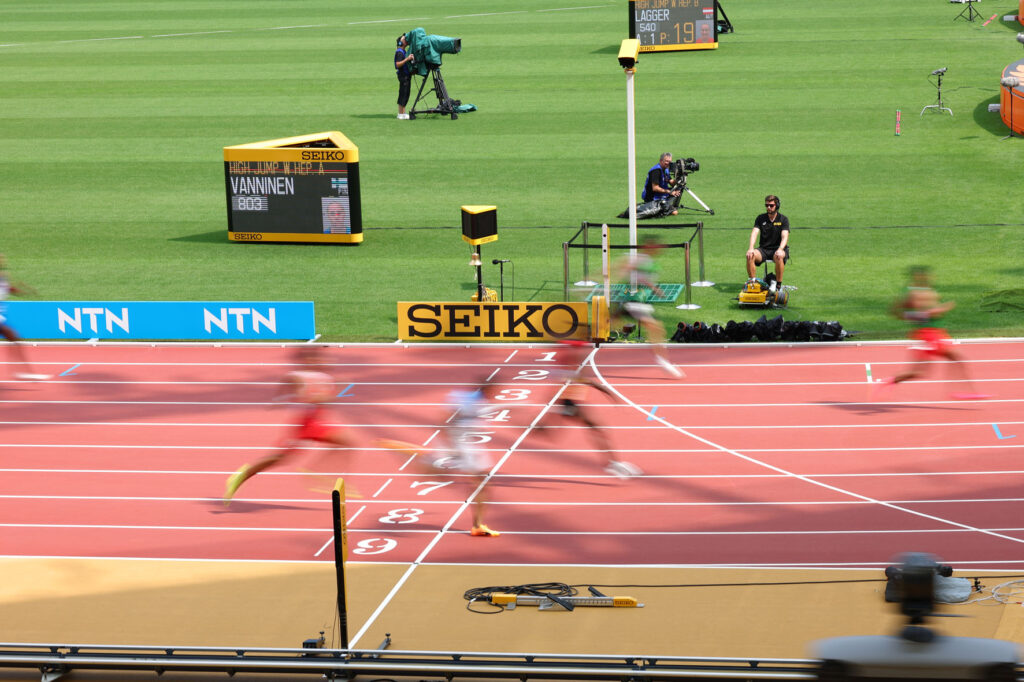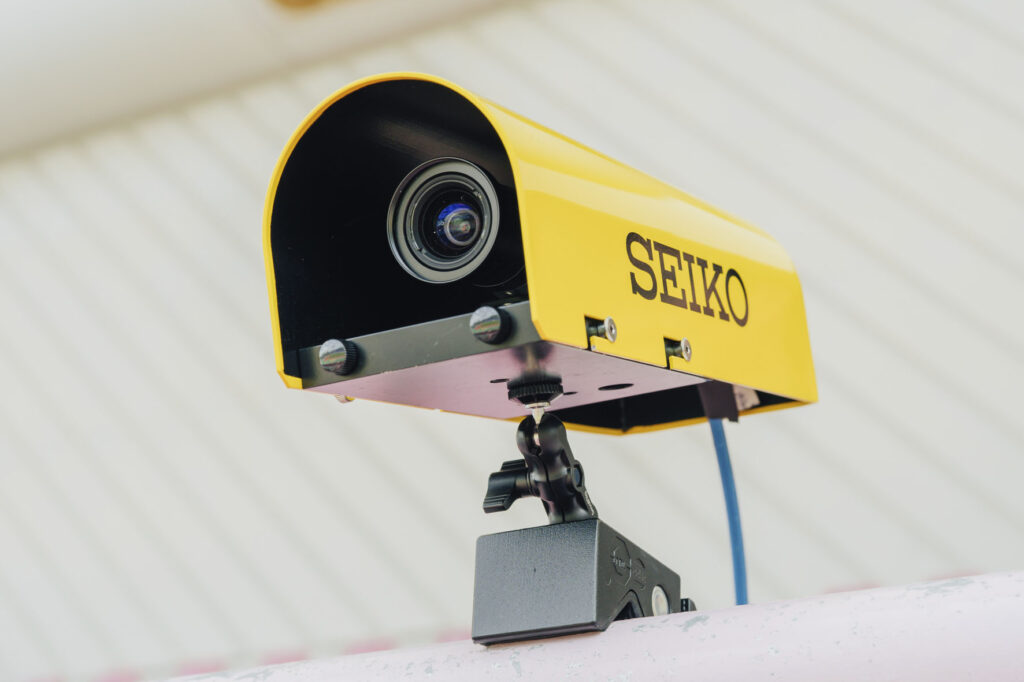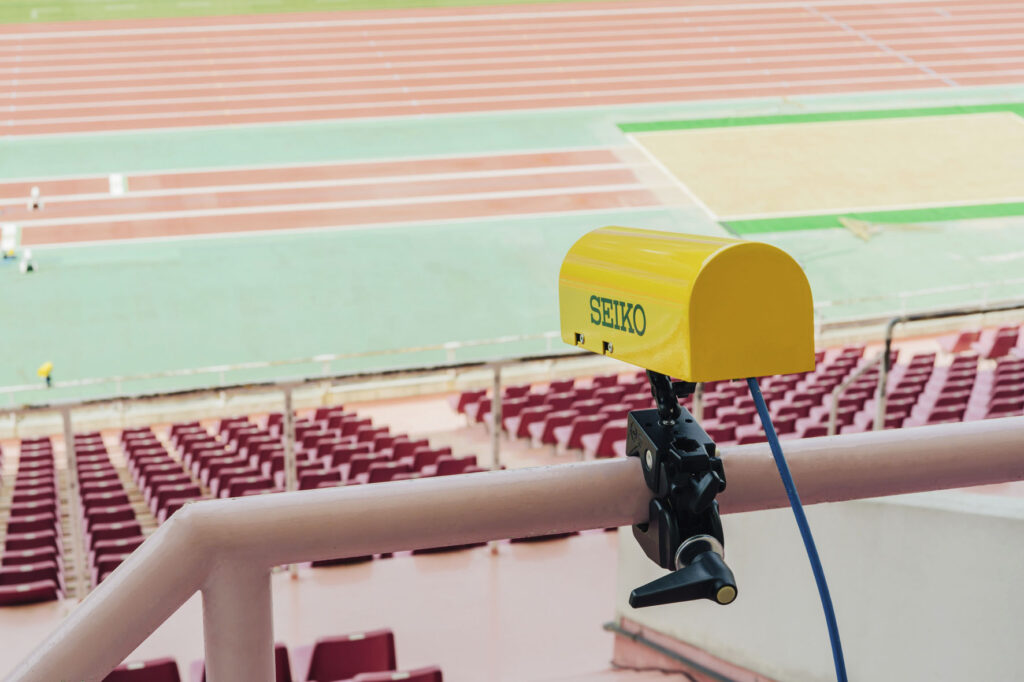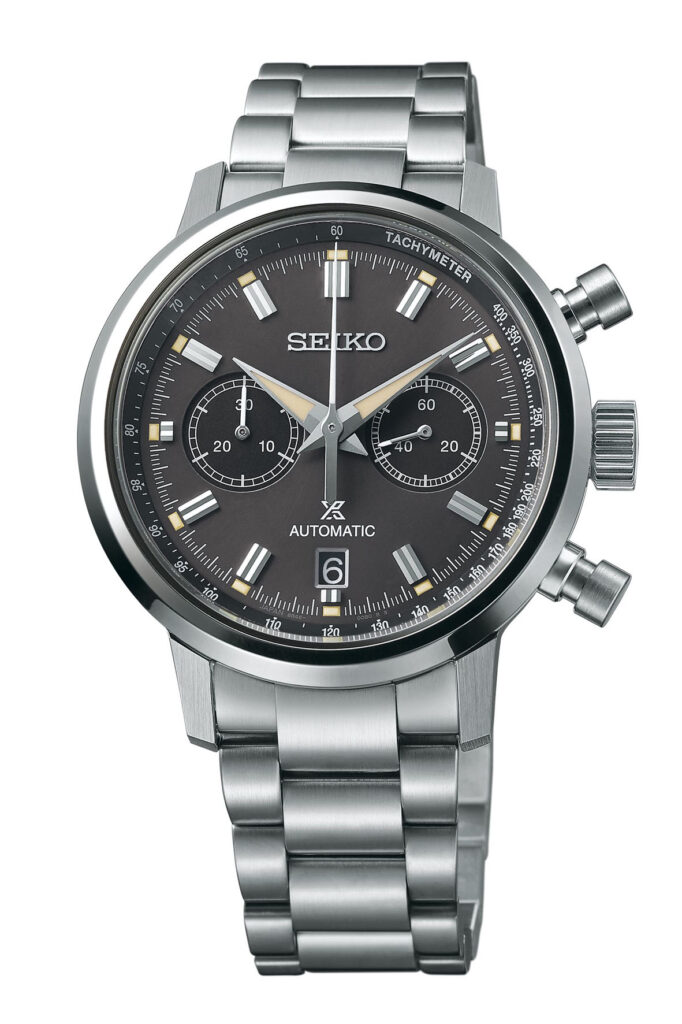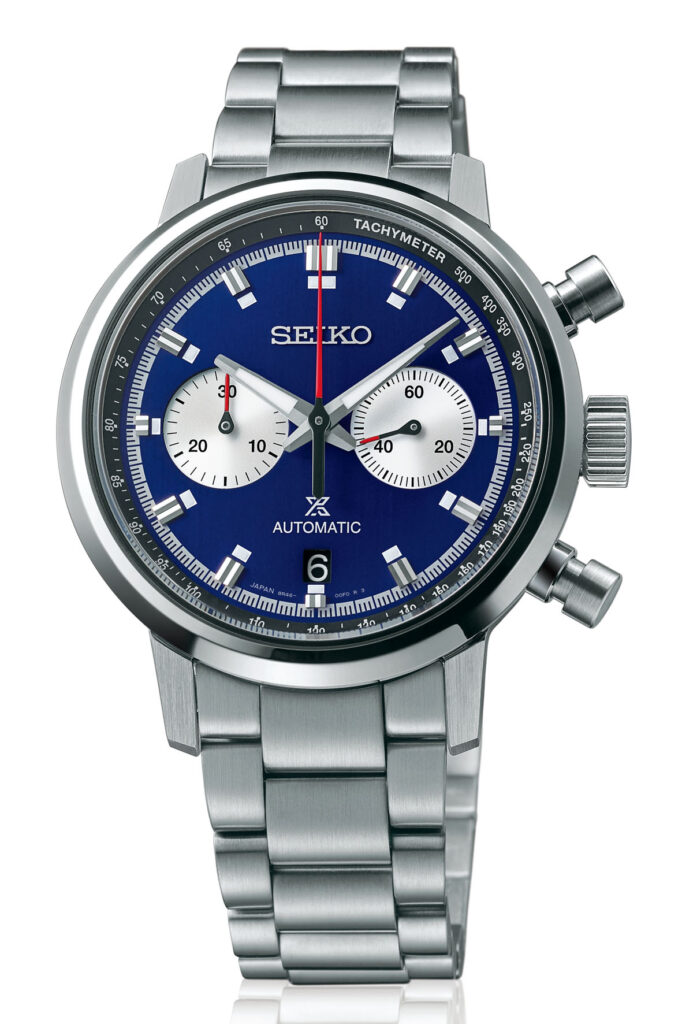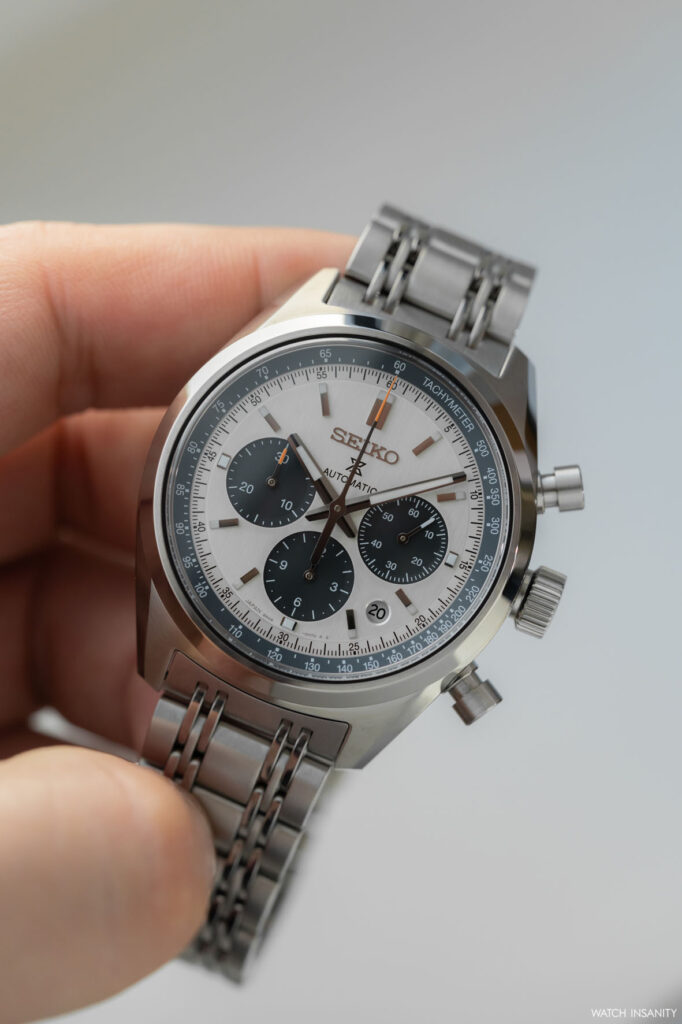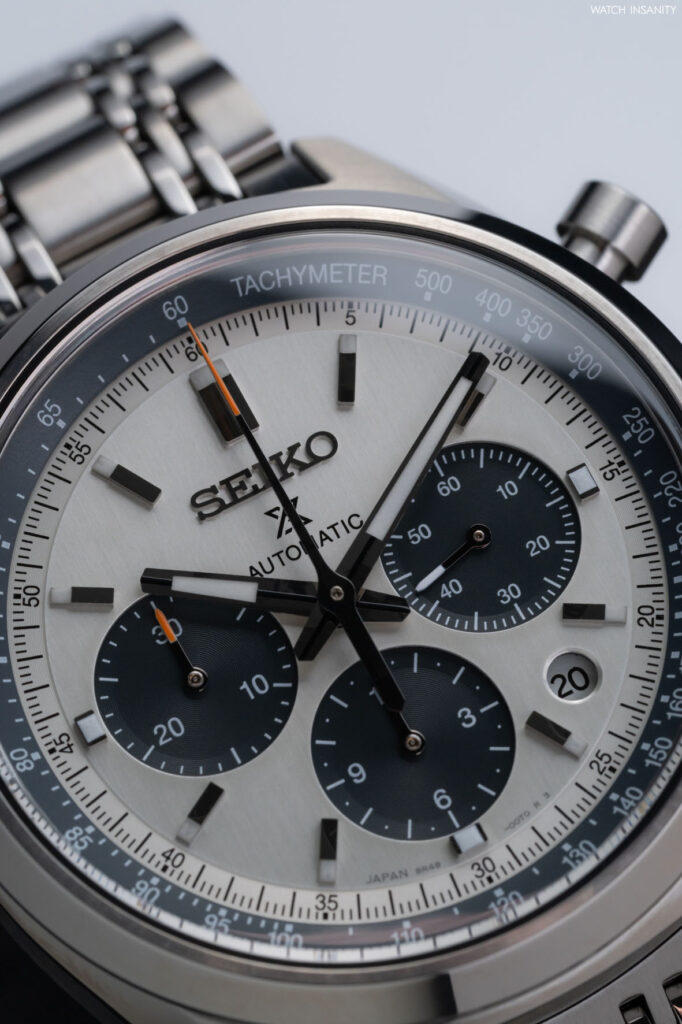Seiko Speedtimer and sports timekeeping: a story of excellence
8 February 2024Among the many challenges that a watchmaking brand has to face, these are the two most exciting: the quest for absolute precision and sports timekeeping. While the former represents an obsession to which all manufacturers pay the price, when it comes to sports timekeeping only few brands can make a difference; on the one hand because of their history in this field, and on the other because of the technological excellence they are able to achieve. Seiko is one of these. Because it has a sporting history that has led the brand to compete in countless disciplines in countless events, but also because, with both its technological instruments and its wristwatches, it has reached peaks of accuracy and precision that arequitehard to match.
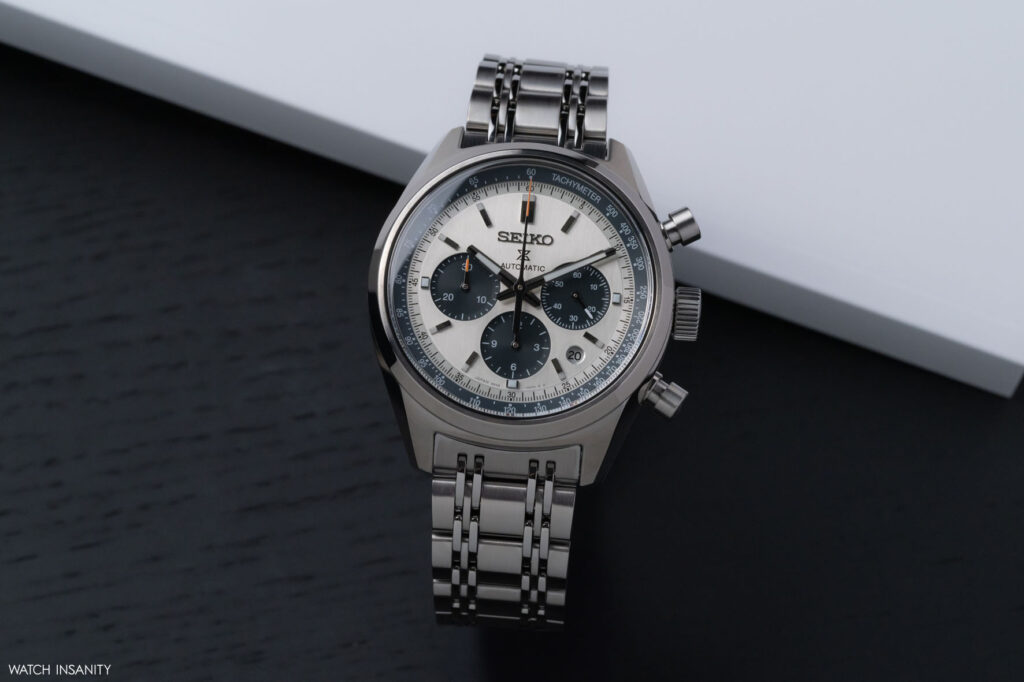
SEIKO AND THE TOKYO OLYMPICS
The history that ties Seiko to sports timekeeping began exactly 60 years ago, in Japan, on the occasion of the 1964 Olympic Games at home, in Tokyo. The Land of the Rising Sun was in the midst of post-war reconstruction and the Olympics were the perfect time for Seiko to demonstrate its technological prowess as official timekeeper of the event – the first time for the brand founded by Kintaro Hattori. Despite having no experience in sports timekeeping at the time, Seiko developed new stopwatches and other devices that enabled the company to play its role to the full in all disciplines where it was called upon to keep time.
The Tokyo ’64 Olympic Games represented a major organisational and industrial effort for Seiko. The brand produced 1,278 timing devices and 36 models, and mobilised 172 employees for the Games, an important number that enabled the brand to successfully support the event’s organisation.
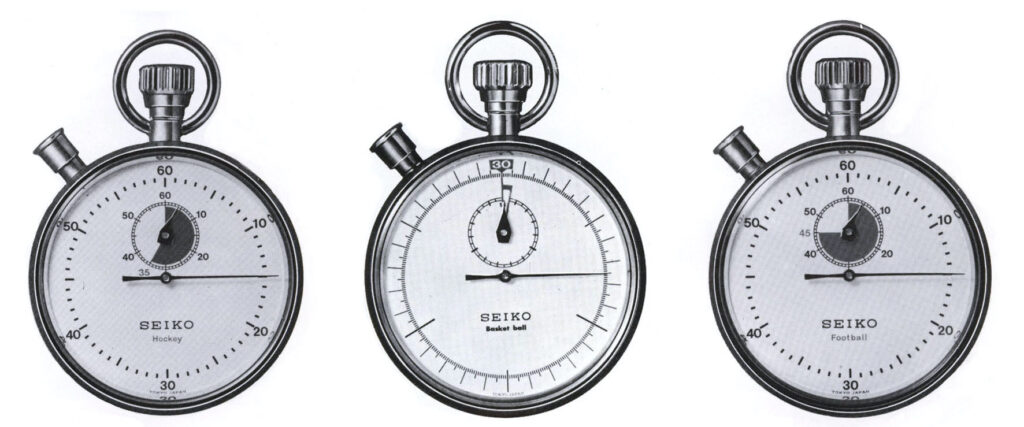
The chronometers used at the 1964 Olympic Games incorporated a heart-shaped cam fixed to the centre of the balance. It was a unique and innovative approach to eliminating the measurement errors common to traditional chronographs. When the stop button was pressed, a lever inside the movement stopped the balance wheel. Due to its shape, the balance wheel always stopped in a fixed position in which the spring maintained power. This allowed the balance wheel to restart without requiring a push on the lever, an action that was at the root of measurement errors in traditional chronographs. Seiko brought 1/5th, 1/10th and 1/100th of a second chronographs to the Olympics, which were used to keep time in different disciplines.
SEIKO SPEEDTIMER: PRECISION COMES TO THE WRIST
Still in 1964, Seiko had brought its own technology to the wrist – outside professional timekeeping – by creating the Crown Chronograph. It was Seiko’s, and Japan’s, first wristwatch with a chronograph function. Every aspect of that watch was designed from the ground up and the Crown Chronograph marked the start of the Japanese brand’s wrist chronographs production.
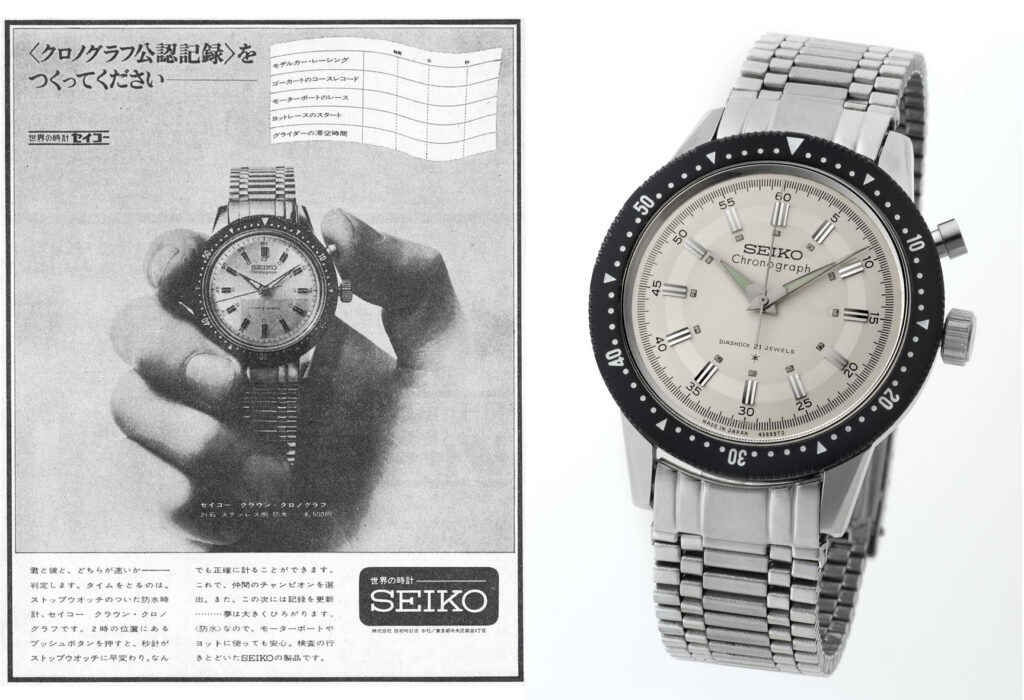
It had a simple single-pusher mechanism but one could already catch a glimpse of the same quest for precision that would characterise the legendary Speedtimer, whichwould be born in 1969, and above all its movement, the Calibre 6139. A chronograph movement that handled the start, stop and reset functions thanks to the insertion of a column wheel. The introduction of the Speedtimer was a key moment in Seiko’s history.
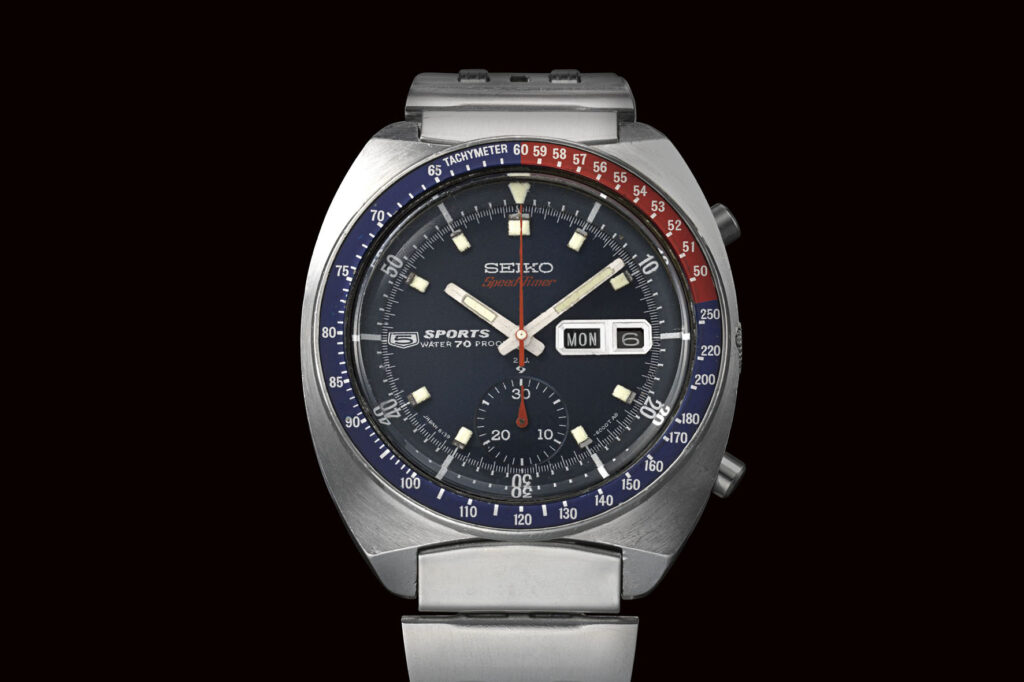
Its real importance lies in the fact that the movement, the Calibre 6139, incorporated both a column wheel and a vertical coupling. The two devices gave the movement a real improvement in precision in measuring short intervals. The Calibre 6139 continued to equip some Seiko chronographs until the late 1970s, as did the Calibre 6138, introduced in 1970. Unlike its predecessor, it handled an additional counter at 12 o’clock, in addition to the one at 6 o’clock – a feature beloved by the brand’s fans who gave the new Speedtimer the nickname ‘panda’.
THE MODERN SPEEDTIMER
Since 2021, the Speedtimer has had several re-editions and interpretations, always at the highest level of precision and mechanics. Currently, the various references are part of the Prospex collection, including two timepieces recently launched by the Japanese manufacturer – one of which is a limited edition of 1,000 pieces celebrating 100 years since the Seiko logo appeared on the dial of the brand’s watches.
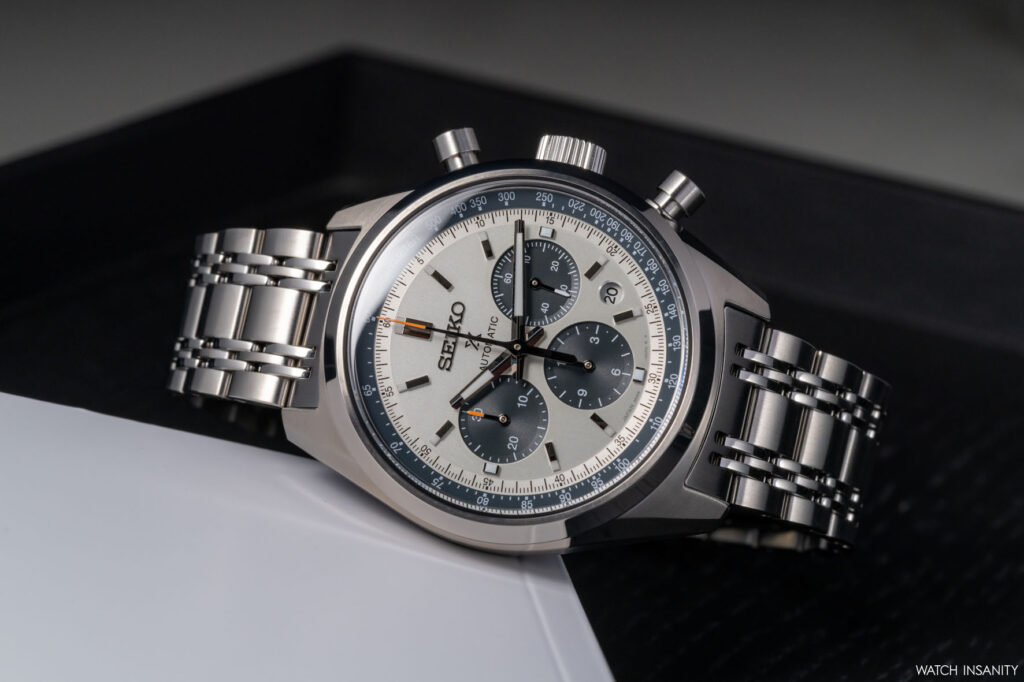
The design of these two models inherits many aspects of the 1972 Speedtimer’s aesthetics. These include the flowing case design, the seven-row bracelet and the ‘panda’ dial with its orange-tipped chronograph seconds hand.
The care Seiko put into making the SRQ047J1 chronograph is evident when one looks at the finishing. The case and bracelet alternate between polishing and a satin finish, while the cream-coloured dial has a slight vertical brushing that makes the watch look elegant and sporty at the same time. The concentric machining of the chronograph counters brings further motion to the dial, making it look quite dynamic.
Speaking of the dial: it features the curved chronograph seconds hand, curved so that its tip comes as close as possible to the indices while extending as far as the tachymeter scale on the flange. The minute and hour hands, as well as the hour markers, are coated with the Lumibrite luminescent material which makes them readable even in low light.
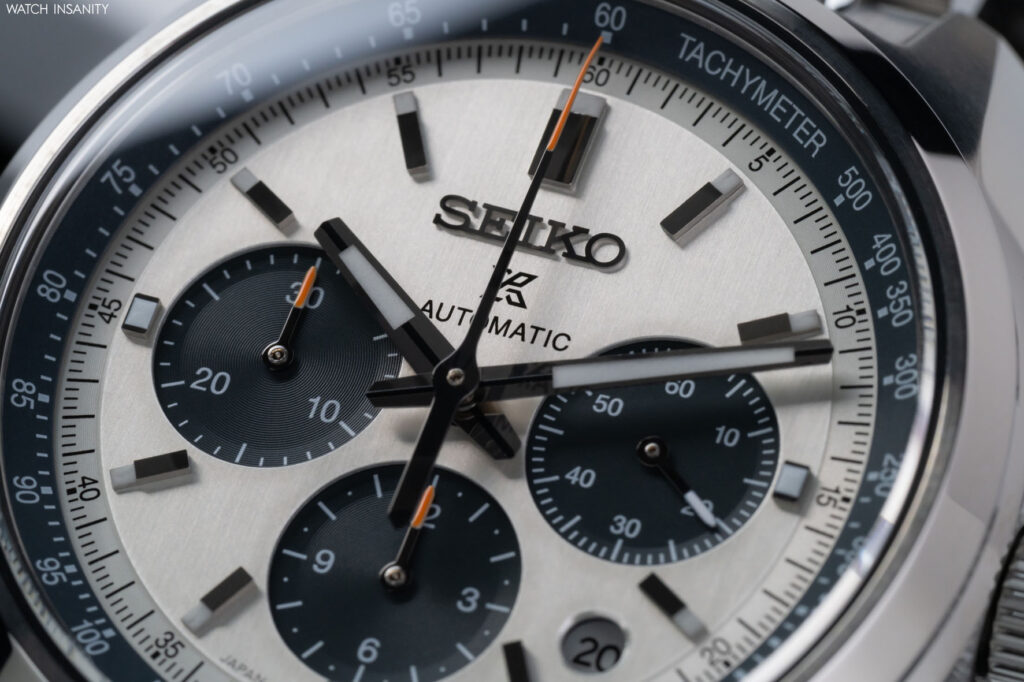
The SRQ049J1 limited edition shares the same technical features as the SRQ047J1 chronograph, but features the so-called ‘inverted panda’ dial. The counters are white, while the rest of the dial is black. In addition to the steel bracelet, it also comes with a vintage-looking black leather strap.
A CUTTING-EDGE CALIBRE
Of course, in the Speedtimer tradition, excellence also lies in the movement: the automatic calibre 8R48 with 28,800 vibrations per hour – assembled by hand by Seiko’s watchmakers – whose chronograph module works with a vertically-mounted column-wheel system to guarantee chronograph precision and reliability. Precision and stability are also ensured by the escapement, whose parts are manufactured using the MEMS technology.
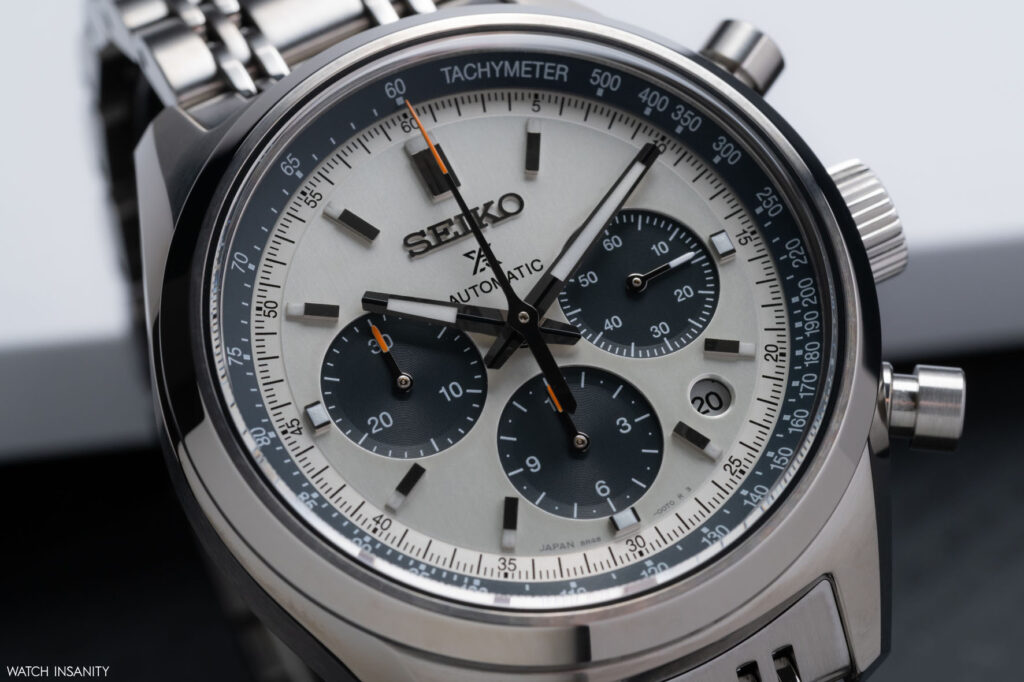
The acronym stands for Micro Electro Mechanical Systems and identifies a specific technology used by Seiko to manufacture its escapements, specifically the escapement wheel and fork. It is a method of manufacturing high-precision components based on semiconductor technology, which enables the creation of smooth and precise parts in shapes that are difficult to achieve through traditional methods.
FROM JAPAN TO SPAIN
Returning to Seiko’s relationship with sports timekeeping, the commitment at Tokyo ’64 was amply rewarded by the enormous worldwide visibility thatthe brand received. Its technical prowess quickly became known, allowing the company to expand its products’ sales to a global scale and establish itself as an international brand.
The experience Seiko gained during the first Olympic adventure soon led the brand to preside over various international sporting events as official timekeeper. These included tennis, athletics, swimming, and no less than four editions of the World Cup, from Argentina ’78 to Italy ’90. Until the grand return to the Olympics, which took place at the Barcelona Games in 1992.
The experience on Catalan soil was an opportunity for Seiko to introduce technological innovations such as starting blocks with integrated loudspeakers and a complete performance measurement system for swimming races. Seiko also created a system that allowed the entire online management of measurement and aggregated results, as well as the instant transmission of the results to the audience.
SEIKO AT THE WINTER OLYMPICS
Eight years after the Tokyo Olympics, Japan had another important opportunity for international visibility with the Sapporo ’72 Winter Games. Already in the aftermath of Tokyo ’64, Seiko had started to develop instruments for timing winter sports such as skiing and ice skating. By reducing the size and weight of the devices and increasing their resistance to cold, Seiko created instruments capable of measuring time with high precision even in difficult natural conditions including snow, ice and cold.
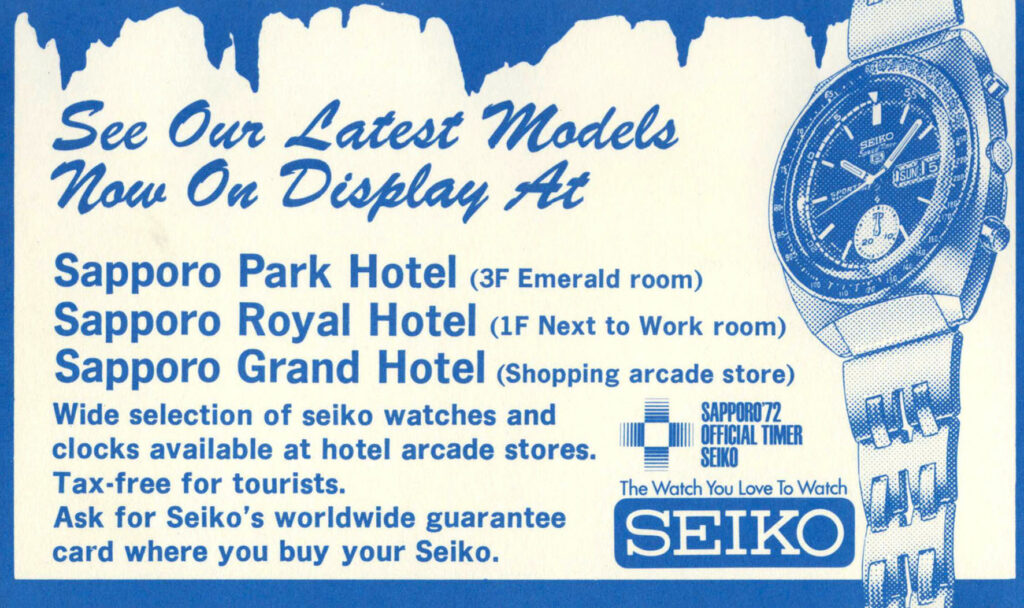
That technological commitment earned the company the role of official timekeeper for the Winter Olympic Games, for the first time in its history. To the Sapporo slopes, Seiko brought an advanced timing system that included electronic multi-timekeeping with an additional manual dual timekeeping system incorporated as a backup; systems that allowed the brand to perform at its best.
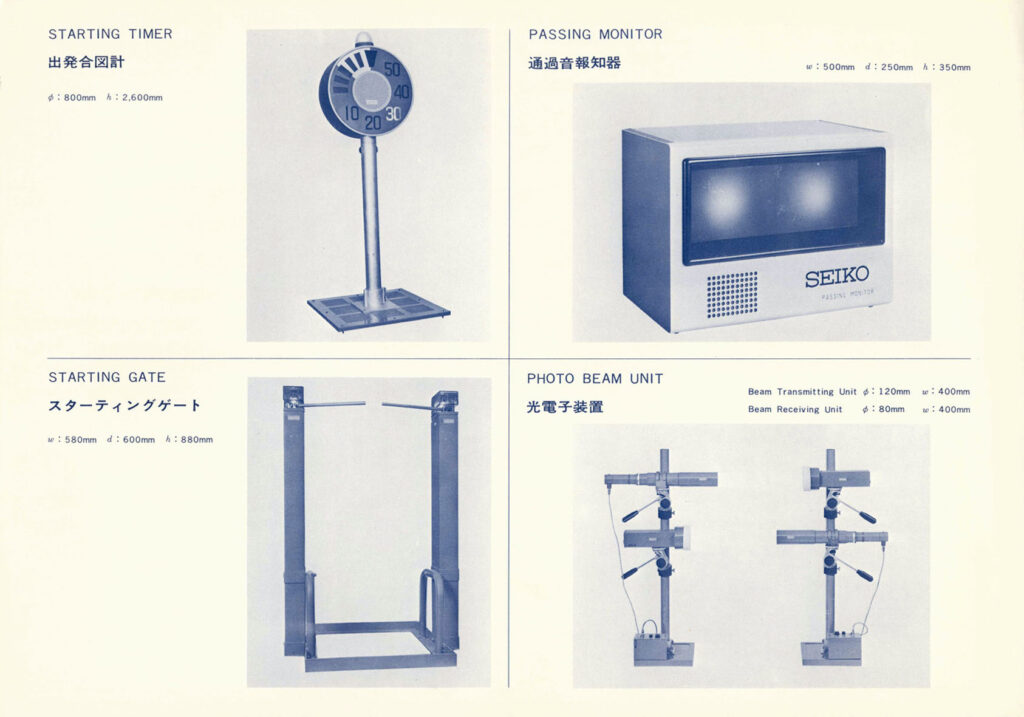
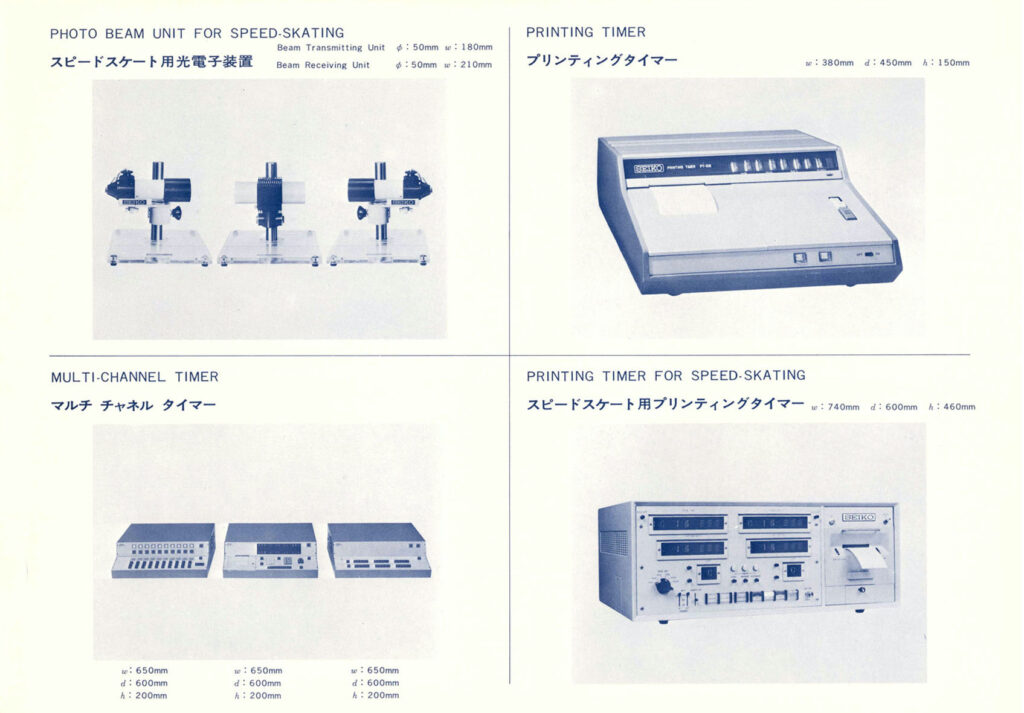
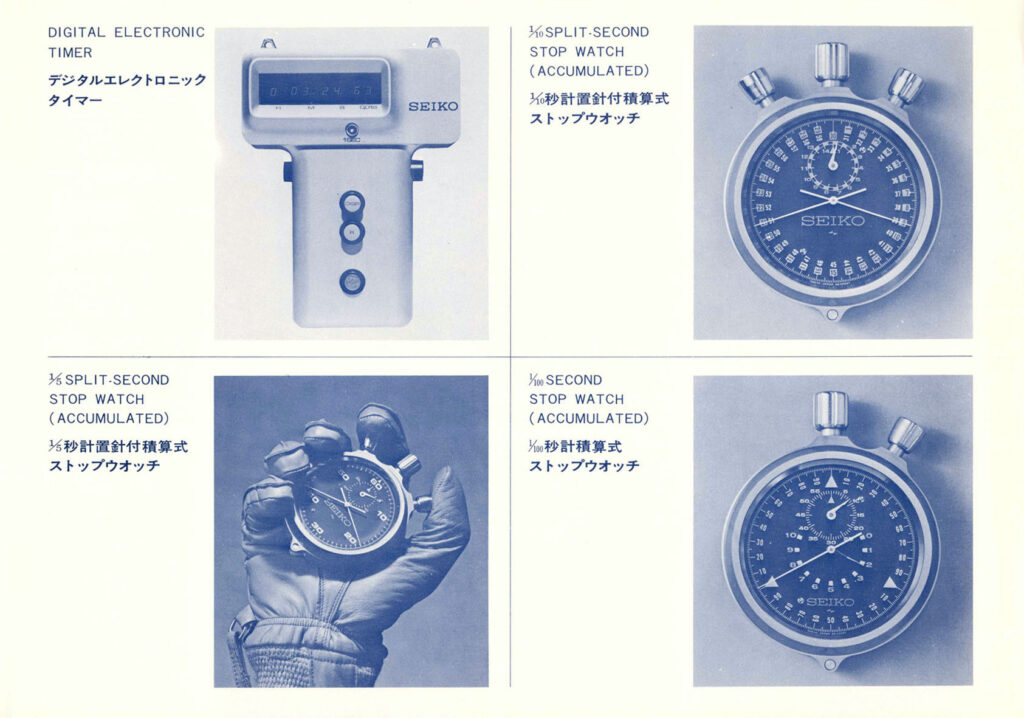
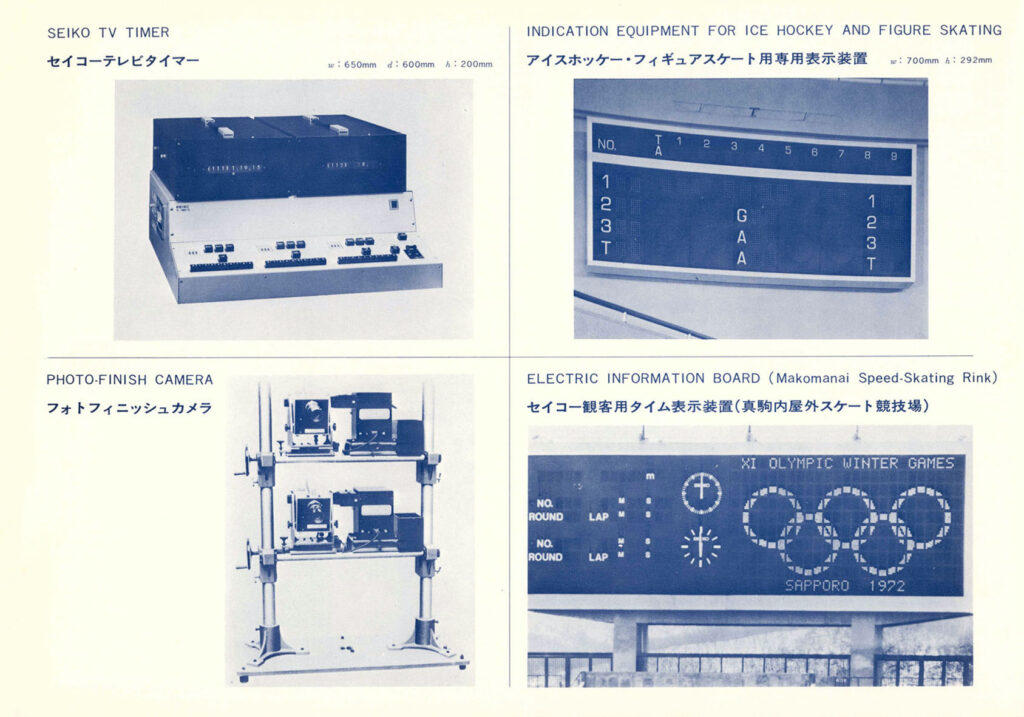
22 years passed before the brand returned to timekeeping at the Winter Games. At Lillehammer ’94, Seiko brought a timer with a dedicated control panel that allowed easy and reliable time checking. Four years later, the Olympic torch returned to Japan, to Nagano, and of course Seiko was there. For those Games, the challenge was not only to obtain accurate measurements but also to display the data in the best possible way. To do this, Seiko set up an extensive network of computer-based systems; prominent among them was the system for measuring the distance of jumps with high-speed cameras.
The brand’s outstanding performances in Norway and Japan earned it the role of official timekeeper of the 2002 Winter Olympics in Salt Lake City for thethird edition in a row. In Utah, Seiko implemented for the first time the use of wireless transponders to instantly show the timing of each athlete in cross-country skiing and biathlon competitions.
SEIKO AND ATHLETICS: AN UNBREAKABLE BOND
Beyond the five Olympic experiences and countless events for which Seiko has been the official timekeeper since 1964, the sporting universe with which the brand keeps a special relationship is athletics. Indeed, Seiko has an ongoing partnership contract with World Athletics lastingsince 1985 and has handled timekeeping for over 180 world athletics competitions.
The World Championships are considered the world’s biggest competition for this discipline and, starting from the 1987 edition in Rome, Seiko has been the official timekeeper for 18 consecutive championships. Through this close partnership with World Athletics, Seiko has kept time and recorded countless records in international competitions for over 30 years, earning the trust of World Athletics, athletes and spectators alike.
This commitment to the athletics world has meant facing a continuous technological challenge to create new tools to make timekeeping more accurate. These include the first electronic distance measuring system (EDM) in 1987, an ultrasonic anemometer in 1991, a new false start detection system in 1994, and a more accurate photo finish at the 1997 Athens World Championships.
Particularly interesting is the introduction of scoreboards with high-visibility colour LED displays on the field in 2013, and along the tracks in 2017 to provide effective visualisation throughout the competition. The most recent innovations are scoreboards that display information on the long jump and triple jump introduced at the 2019 World Championships in Doha while, at the last edition held in Budapest last August, they presented a high-resolution camera system for the triple jump competitions capable of recording 60 frames per second to capture the area from the run-up platform to the drop zone.

SEIKO SPEEDTIMER: REFERENCES TO REMEMBER
Both in timekeeping and in the development of wrist chronographs, Seiko never stops evolving. In addition to the latest Speedtimer, which we have written about above, some mechanical references from the first generation in the collection deserve a mention, including the SRQ037J1, an automatic chronograph with a round case and steel bracelet and anthracite-coloured dial. Or the reference SRQ043J1, whose dial changes from navy blue to deep blue depending on the perspective from which it is viewed.
Another interesting item is the reference SRQ045J1, launched early last year in a limited edition of 600 pieces. The watch is a modern interpretation of the first Seiko chronometer made for the 1972 Sapporo winter Olympics, with special features. It had, for example, a black dial to ensure high readability during competitions in the snow. Total black is also the livery of the Speedtimer SRQ045J1. All these automatic Speedtimers are powered by the calibres of the 8R family.
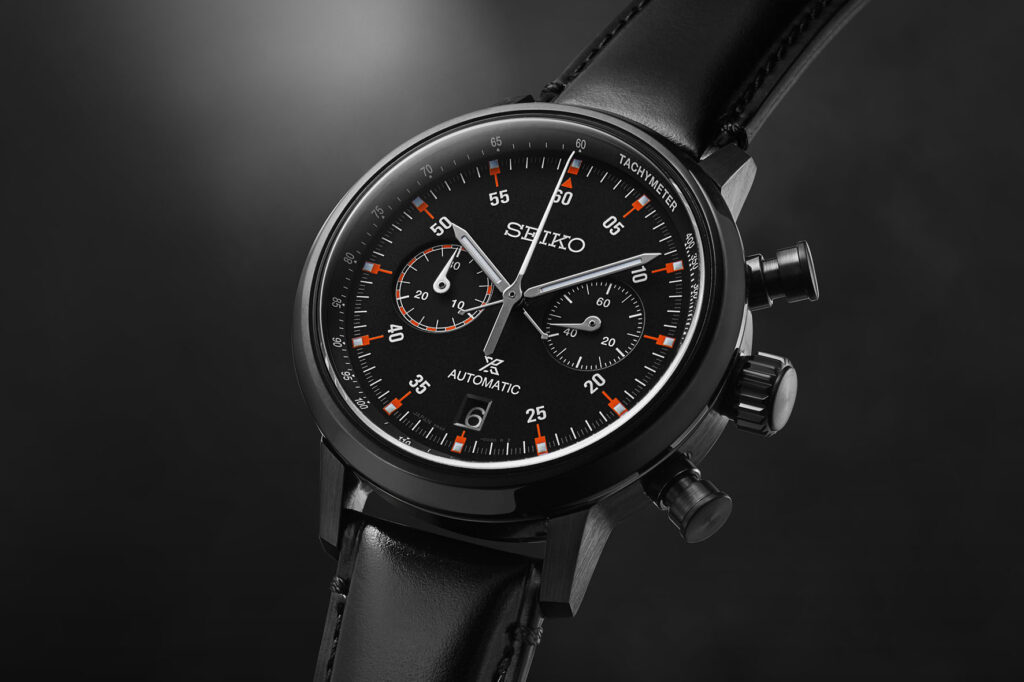
Unlike the Solar Speedtimers, powered bythe solar-powered Calibre V192. The shape of their case remains true to the original, while the 39mm diameter, the alternating polished and satin finishes on the bracelet, and the curved sapphire crystal give the chronographs a modern touch. The dial colours are beautiful, ranging from white to navy, from gold to black to green and ice blue. The dials also have a sandblasted finish that guarantees a high level of legibility, a key feature on every Prospex.
SEIKO, SPORTS AND THE CORPORATE PHILOSOPHY
In short, since the 1964 Tokyo Olympics, Seiko has measured the moments new records were set – including Usain Bolt’s legendary record in Berlin in 2009 – and sports history wasmade. Moments accompanied by the development of cutting-edge technology, thanks to the dedication of the technicians and experts who made up the brand’s timekeeping teams. Always striving for precision.
A quest that has also been brought to people’s wrists, conceiving, developing and creating chronograph movements that have become part of history, such as the calibre 6139 of 1969, and watches that are still a symbol of the brand today. These include, as mentioned, the models of the Speedtimer collection, which best embodie both Seiko’s quest for precision and excellence that has guided it since its foundation by Kintaro Hattori.
‘Never look back, look ahead, move forward, even half a step, be flexible to embrace change and be sincere,’ said Hattori. All principles that the Japanese brand also puts into practice, every day, in its relationship with sports, where performance has gone hand in hand with excellence for 60 years. Since that summer of 1964 when the Olympic torch lit up the Tokyo sky, making Seiko’s star shine.
By Davide Passoni

